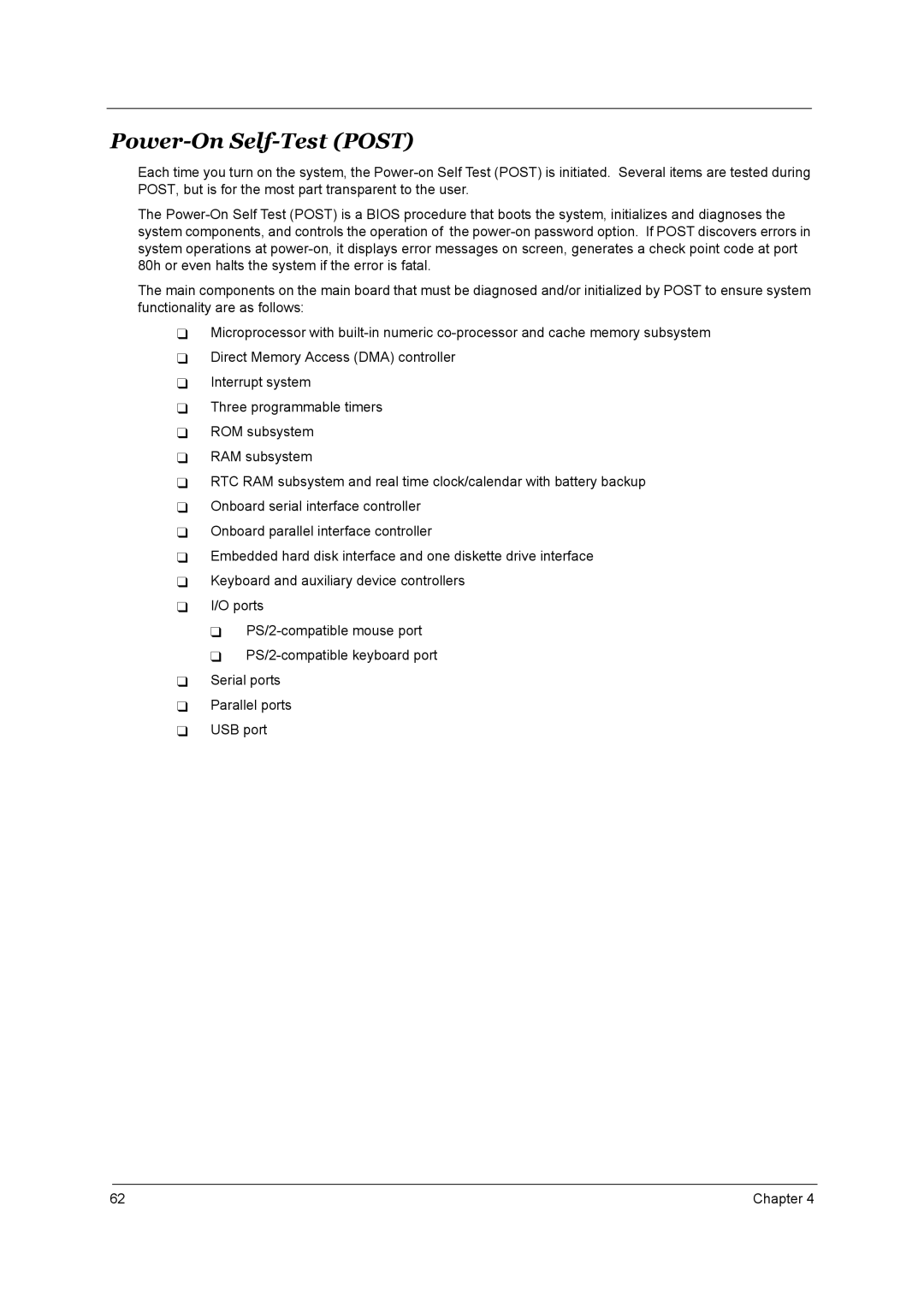
Power-On Self-Test (POST)
Each time you turn on the system, the
The
The main components on the main board that must be diagnosed and/or initialized by POST to ensure system functionality are as follows:
Microprocessor with
Interrupt system
Three programmable timers ROM subsystem
RAM subsystem
RTC RAM subsystem and real time clock/calendar with battery backup Onboard serial interface controller
Onboard parallel interface controller
Embedded hard disk interface and one diskette drive interface Keyboard and auxiliary device controllers
I/O ports
Serial ports Parallel ports USB port
62 | Chapter 4 |
